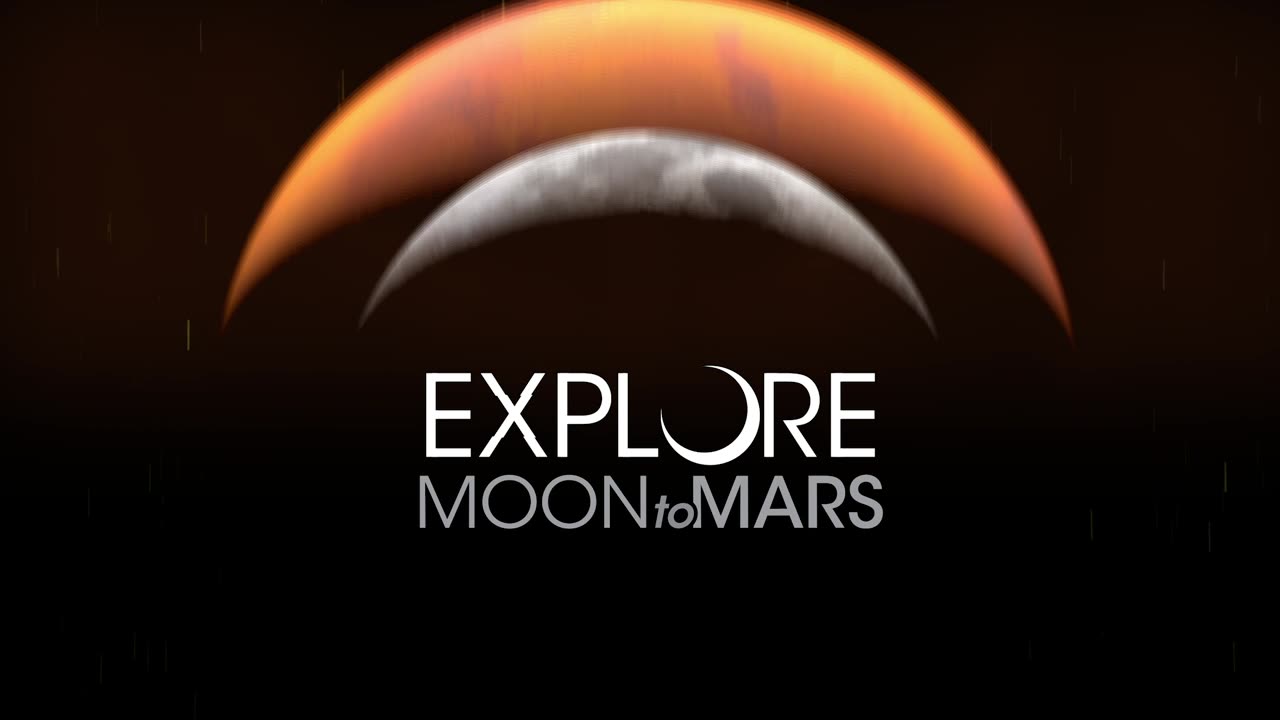Premium Only Content

Moon Phase and Libration, 2022 South Up, NASA.
Lunar Reconnaissance Orbiter (LRO) has been in orbit around the Moon since the summer of 2009. Its laser altimeter (LOLA) and camera (LROC) are recording the rugged, airless lunar terrain in exceptional detail, making it possible to visualize the Moon with unprecedented fidelity. This is especially evident in the long shadows cast near the terminator, or day-night line. The pummeled, craggy landscape thrown into high relief at the terminator would be impossible to recreate in the computer without global terrain maps like those from LRO.
The Moon always keeps the same face to us, but not exactly the same face. Because of the tilt and shape of its orbit, we see the Moon from slightly different angles over the course of a month. When a month is compressed into 24 seconds, as it is in this animation, our changing view of the Moon makes it look like it's wobbling. This wobble is called libration.
The word comes from the Latin for "balance scale" (as does the name of the zodiac constellation Libra) and refers to the way such a scale tips up and down on alternating sides. The sub-Earth point gives the amount of libration in longitude and latitude. The sub-Earth point is also the apparent center of the Moon's disk and the location on the Moon where the Earth is directly overhead.
The Moon is subject to other motions as well. It appears to roll back and forth around the sub-Earth point. The roll angle is given by the position angle of the axis, which is the angle of the Moon's north pole relative to celestial north. The Moon also approaches and recedes from us, appearing to grow and shrink. The two extremes, called perigee (near) and apogee (far), differ by as much as 14%.
The most noticed monthly variation in the Moon's appearance is the cycle of phases, caused by the changing angle of the Sun as the Moon orbits the Earth. The cycle begins with the waxing (growing) crescent Moon visible in the west just after sunset. By first quarter, the Moon is high in the sky at sunset and sets around midnight. The full Moon rises at sunset and is high in the sky at midnight. The third quarter Moon is often surprisingly conspicuous in the daylit western sky long after sunrise.
#moon#space#nasa#viral#knowledge#huzaifa#views#trending#technology#
-
 LIVE
LIVE
Badlands Media
9 hours agoBadlands Daily: October 22, 2025
2,836 watching -
 LIVE
LIVE
Wendy Bell Radio
5 hours agoKing Of The Trolls
7,496 watching -
 14:00
14:00
It’s the Final Round
9 hours ago $0.02 earned💰NBA Best Bets🔥Player Prop Picks, Parlays, Predictions FREE Wednesday Today October 22nd 10/22
262 -
 LIVE
LIVE
LFA TV
12 hours agoLIVE & BREAKING NEWS! | WEDNESDAY 10/22/25
3,218 watching -
 1:00:40
1:00:40
Chad Prather
10 hours agoHow To Live An UNSHAKEABLE Life!
46.4K18 -
 1:55:28
1:55:28
The Chris Salcedo Show
13 hours ago $4.43 earnedDems Only Like Violence Directed At Conservatives
24.7K9 -

Welcome to the Rebellion Podcast
14 hours ago $0.61 earnedHappy Hump Day - Welcome to the Rebellion Podcast Live 10/22
18.1K -
 8:29
8:29
Freedom Frontline
16 hours agoFox News Analyst EXPOSES Obama and Hillary’s Dirty Secret
20.4K21 -
 21:34
21:34
Jasmin Laine
19 hours agoReporters STUNNED as Carney’s “No Deal Coming” LEAKS—Billboards EXPLODE Nationwide
25K34 -
 1:22:28
1:22:28
Crypto Power Hour
13 hours ago $2.68 earnedThe StableCoin Queen, Author, Cybersecurity Expert Alyze Sam
28.6K5